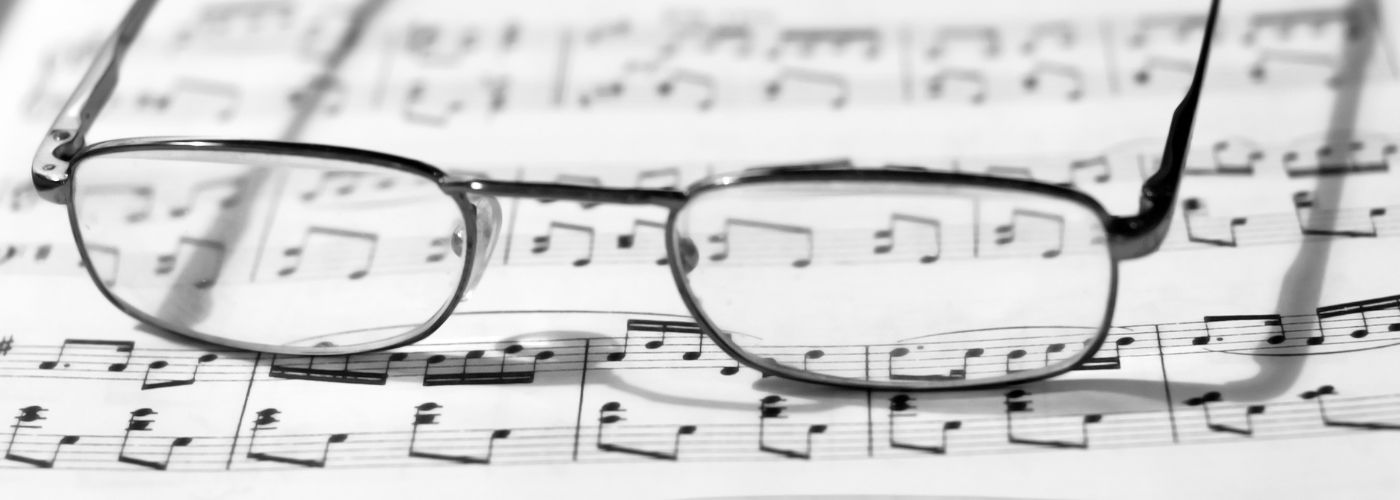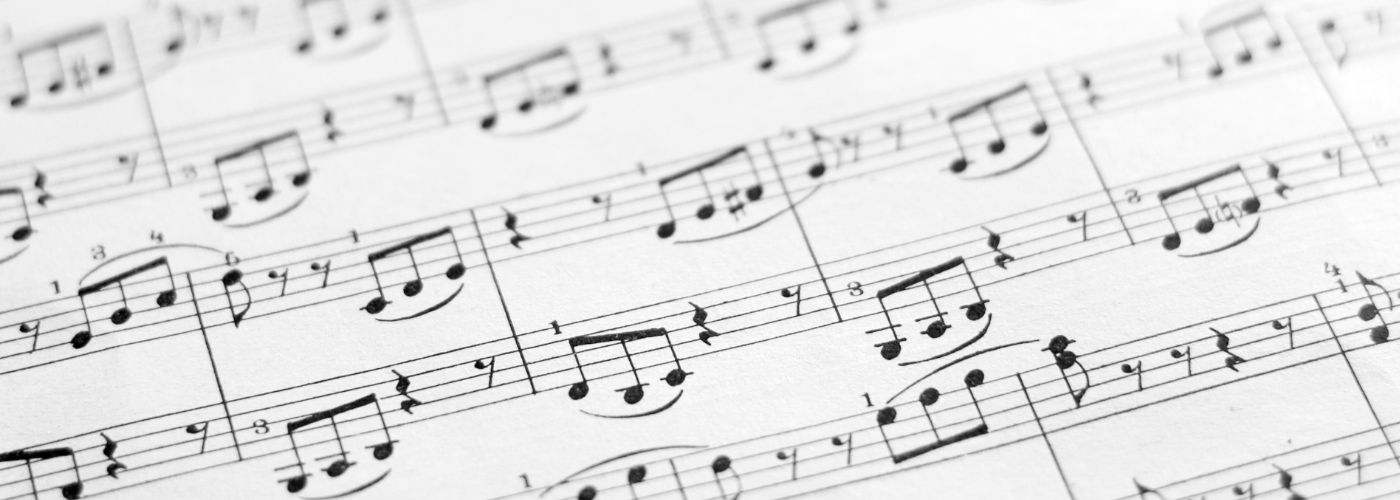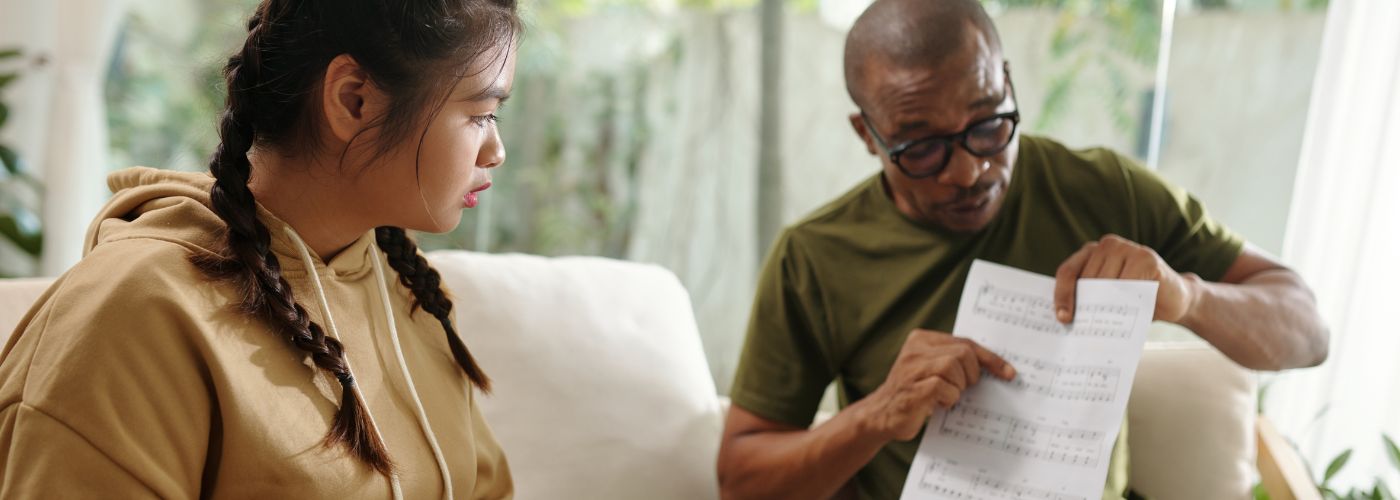For musicians, mastering the art of sight reading is akin to having a superpower in their musical arsenal. It’s not just a skill; it’s a gateway to unlocking a world of musical possibilities.
Whether you’re a budding musician or a seasoned player, join us as we take a look at why sight reading matters and how it can elevate your musical journey!
What Is Sight Reading?
Sight reading, akin to reading a book aloud without prior knowledge of its contents, is a musical superpower that opens up a world of possibilities for musicians. This skill is not only essential for orchestras, bands, and solo performances but also acts as a key to unlocking greater musical fluency.
Embarking on the journey to master this skill is both exciting and rewarding, especially when you have the guidance of an experienced piano teacher!
One of the greatest advantages of having a teacher is the instantaneous feedback they provide. As you navigate through a piece in real time, a teacher can pinpoint areas that need improvement, correct mistakes, and offer valuable suggestions. This personalized feedback accelerates your learning curve and ensures you build solid foundations!
How To Learn To Sight Read Music
Remember that learning to sight read music is a process, both for children and adults learning to piano. Developing this important skill takes time and effort, but with practice and guidance, it is possible! Consider making these foundational steps a part of your musical journey:
Master the Basics of Music Notation
Before you leap into sight reading, ensure you have a solid foundation in music notation. Understand key signatures, time signatures, note values, and other essentials. It’s like learning the alphabet before constructing sentences – the basics are the building blocks of musical fluency.
Start Simple and Gradually Increase Difficulty
Begin developing your skills with music that is well within your comfort zone. Choose pieces with a slow tempo and straightforward rhythms. This gradual approach allows you to build confidence and familiarize yourself with the patterns of musical notation. As you grow more comfortable, challenge yourself with progressively complex compositions.
Practice Regularly
Like any skill, sight reading improves with consistent practice. Set aside dedicated time in your practice routine for sight reading exercises. Use sheet music that you haven’t seen before and work through it systematically. The more you expose yourself to diverse musical passages, the more adept you become at decoding them on the fly!
How To Get Better At Sight Reading
Whether working with a qualified music teacher or simply practicing on your own, there are steps you can take to enhance your sight reading abilities! Try some of the following tips for keeping yourself on track as you learn and grow:
Expand Your Repertoire
Diversify the genres and styles of music you practice with. This not only keeps things interesting but also hones your ability to adapt to different musical languages. Whether it’s classical, jazz, or pop, exposing yourself to a variety of genres enhances your overall sight reading proficiency.
Focus on Rhythm
Rhythm is the heartbeat of music, and mastering it is crucial for effective sight reading. Practice clapping or tapping out rhythms before even touching your instrument to help you stay within time. This rhythmic foundation will provide a solid framework when you encounter unfamiliar patterns in your sight reading endeavors.
Embrace Mistakes as Learning Opportunities
Sight reading is a skill that evolves over time. Embrace mistakes as stepping stones to improvement rather than stumbling blocks. Analyze where you went wrong, understand the pattern, and incorporate that knowledge into your future practice sessions.
Sight Reading Tips
As you develop your skills, get in the habit of using tips and drills to strengthen the progress you’ve already made! Consider the following tips for improving as you learn:
Look Ahead
Train your eyes to scan ahead in the music. Anticipating what’s coming allows for smoother transitions between notes and phrases.
Use Landmarks
Identify key landmarks in the music, such as the beginning of a new section or a recurring motif. These can serve as anchor points to help you navigate through the piece.
Stay Relaxed
Tension is the enemy of fluidity. Keep your muscles relaxed, and don’t let the fear of making a mistake overshadow your performance.
Simply put, sight reading is a skill that opens doors to spontaneous musical expression. With patience, consistent practice, and a willingness to embrace challenges, you can elevate your musical abilities and experience the joy of making music on the spot!



Continue Reading
Creative Ways to Encourage Practice at Home for Young Musicians
Have you ever watched a child lose interest in their instrument after just a few
Jul
Top Breath Control Exercises For Singers
Have you ever noticed how some singers seem to effortlessly hold long notes while others
Jun
How Does The Suzuki Piano Method Work?
Have you ever wondered why some children seem to pick up music so effortlessly? The
May